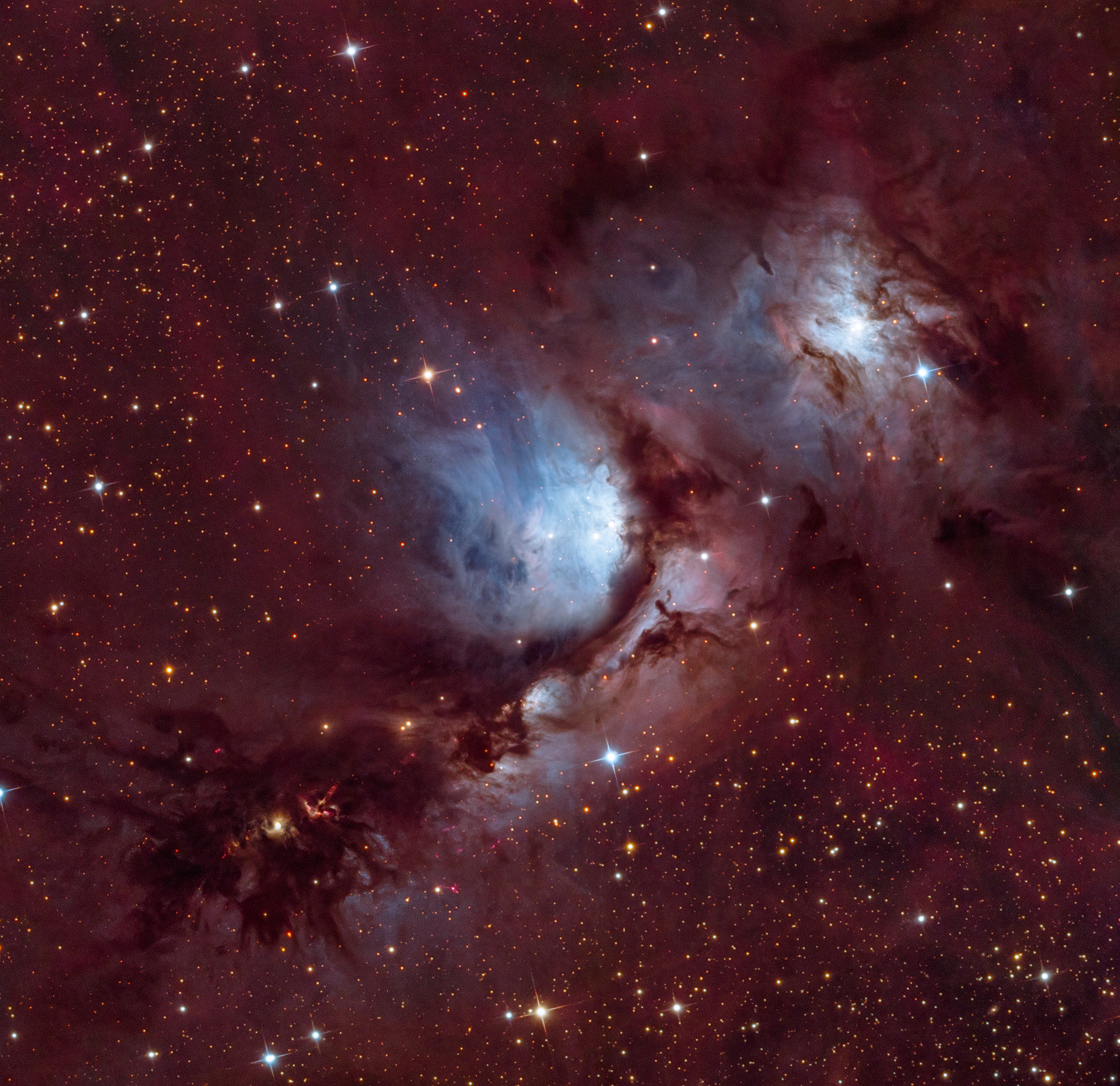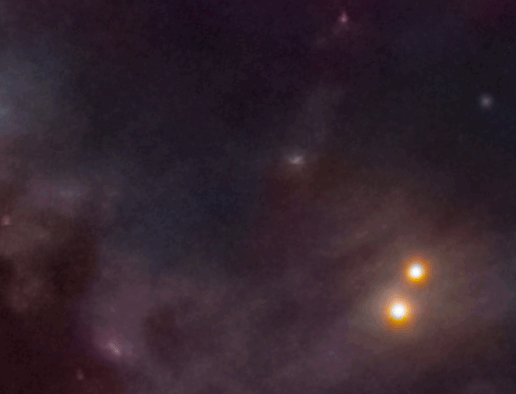
M78 Stellar Nursery Complex |
|||||||||||||||||||||
About This PhotographStars are formed when clouds of gas and dust begin to collapse under their own gravity. It takes millions of years for enough material to collect in dense enough clumps that the pressure and temperature are high enough to give rise to nuclear fusion. Once this happens, newborn stars find themselves still embedded in their formative clouds, but now they exert their own outward force in the forms of stellar winds and radiation pressure. Eventually, huge caverns are carved out and the nebula is lit up from the inside for all to see. In a vast molecular cloud 1600 light years away in the constellation of Orion we can see all stages of this process. The brightest section of this chain of nebulas is known as Messier 78, and shines mainly due to reflection of light from the hot new stars at its center. A dark lane bisects the reflection nebula, a dense region of gas and dust seen in silhouette. Toward the upper right is another similar nebula known as NGC 2071. Toward the lower-left of the photograph is another dense region with embedded stars and proto-stellar objects – a dark nebula just beginning to form and release its progeny to the galaxy. This cloud is home to McNeil's nebula, discovered relatively recently, in 2004, by amateur astronomer Jay McNeil. While currently almost entirely extinguished, this variable nebula occasionally lights up a comet-shaped section of the cloud – a new star flickering to life. Here is a comparison between this photograph and one of the same region I took in 2005 showing McNeil's Nebula appearing and disappearing:
Click here for an annotated photograph. | |||||||||||||||||||||
|
|||||||||||||||||||||

